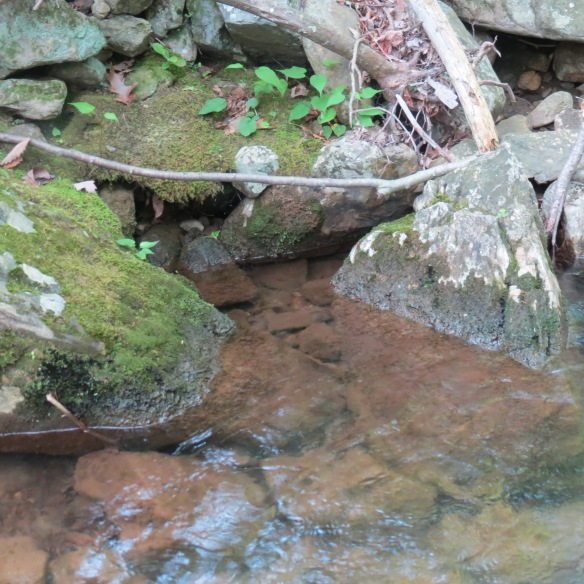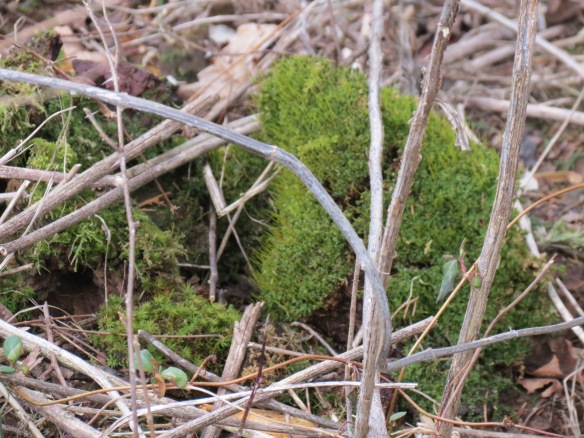Although our winter here in the Blue Ridge has actually been pretty mild, I find myself longing to see green fields and hillsides once again. With only a few weeks of winter remaining, I set out to look for signs that winter is loosening its grip on the land and giving way to the season of renewal. My last walk was several days ago and I was amazed at how much the landscape had changed.
The birds are also giving clues that spring is on its way. The Eastern Phoebes can be heard issuing their phoebe, phoebe calls as they check out our porch rafters for the choicest nest sites. I’m also seeing the Eastern Bluebirds once again that had retreated to lower elevations to escape the worst of winter, and a Northern Mockingbird pair is busy chasing intruders out of their favorite tangle of vines.
Although the nights are cold, it’s the breeding season for many animals. Last night, my husband and I were awakened by the shrill cries of a fox in the front yard. The cries, a little higher-pitched than a coyote, went on for about a minute. My first thought was of the chickens, but I knew they were safely locked up in the coop. Possibly, the fox was calling to attract a mate.
The lengthening of the days is obvious to our hens, who have started laying again, so it’s just a matter of time until winter blows its last gasp. I just need to be patient.
There is a way that Nature speaks, that land speaks. Most of the time we are not patient enough, quiet enough, to pay attention to the story. — Linda Hogan










